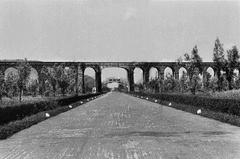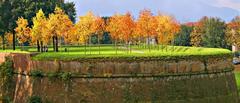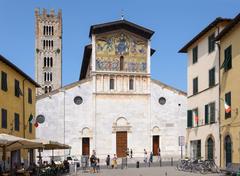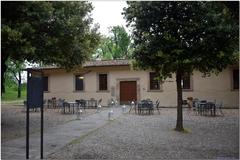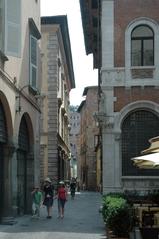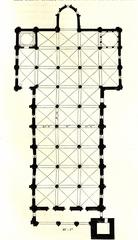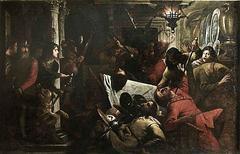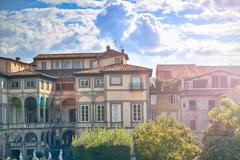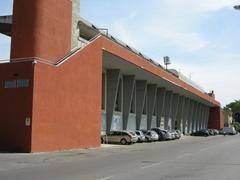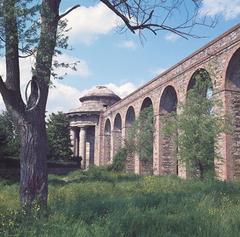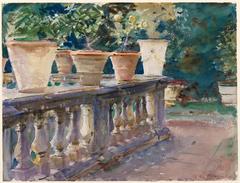Monument to the Fallen Lucca: Visiting Hours, Tickets, and Travel Guide
Date: 14/06/2025
Introduction: History and Cultural Significance
The Monument to the Fallen in Lucca, Italy, stands as a profound emblem of remembrance, honoring the city’s soldiers who sacrificed their lives in the major conflicts of the 20th century, particularly World War I and World War II. Rooted in the Italian tradition of war memorials, this monument marks a cultural shift from glorifying military conquest to solemnly commemorating sacrifice and loss. The monument’s integration within Lucca’s historical and cultural fabric reflects enduring values of unity, peace, and resilience (nowjourney.com).
Uniquely, the monument is housed within the Romanesque Church of San Cristoforo, a 12th-century structure. In a transformative 1940 restoration, the church’s interior was stripped of ornamentation, and the names of Lucca’s fallen were engraved directly onto the stone walls, embedding memory within the very architecture (Visit Tuscany). This architectural minimalism creates a space for quiet reflection and solemn remembrance.
Centrally located within Lucca’s historic center, the monument is easily accessible and closely integrated with other city landmarks such as the Cathedral of San Martino, Piazza dell’Anfiteatro, and the city’s Renaissance walls. This strategic placement encourages visitors to explore Lucca’s layered heritage, from medieval to modern times (Visit Tuscany).
The monument welcomes all visitors free of charge, encouraging reflection, education, and community commemoration. National holidays such as November 4th (National Unity and Armed Forces Day) and April 25th (Liberation Day) are marked by guided tours and commemorative events, making the site a living platform for both mourning and the promotion of peace (iliveitaly.it).
Table of Contents
- Historical Evolution of War Memorials in Italy
- Symbolism and Artistic Features
- Commemorative Practices and National Identity
- Educational and Cultural Significance
- War Memorials and the Promotion of Peace
- Visitor Information: Hours, Tickets, Accessibility
- Visuals and Media Suggestions
- Integration with Broader Historical Themes
- Architectural and Symbolic Analysis
- Visiting the Monument: Practical Tips and Etiquette
- Nearby Historical Sites
- FAQ
- Conclusion and Final Tips
- References
Historical Evolution of War Memorials in Italy
Italy’s tradition of war memorials dates back to Roman times, with ancient monuments celebrating military victories. The modern era, however, saw a transformation: after World War I and II, new memorials honored ordinary soldiers and civilians, focusing on collective memory rather than triumph (nowjourney.com). Over 1,200 memorials and cemeteries were built after WWI, reflecting national mourning and a reaffirmation of values like unity and peace.
Symbolism and Artistic Features
Italian war memorials often incorporate classical motifs—columns, arches, statues—alongside inscriptions and allegorical figures. The Monument to the Fallen in Lucca uses enduring materials like white marble and bronze to symbolize purity and the eternal nature of memory. Its prominent location ensures visibility and daily interaction with the public, turning remembrance into a living aspect of the city (nowjourney.com).
Commemorative Practices and National Identity
War memorials serve as focal points for civic rituals, especially on national holidays like November 4th and April 25th. The Monument to the Fallen in Lucca anchors such ceremonies, reinforcing a sense of unity and intergenerational dialogue. These rituals ensure that the lessons of sacrifice remain relevant in contemporary society (iliveitaly.it).
Educational and Cultural Significance
Memorials like Lucca’s are open-air classrooms, often included in school programs and guided tours to contextualize historical events (thetouristchecklist.com). They also inspire artistic and literary works and serve as ongoing symbols in the Italian cultural imagination (finestresullarte.info).
War Memorials and the Promotion of Peace
While commemorating sacrifice, Italian war memorials, including Lucca’s, are also sites that promote peace and reconciliation. Inscriptions often explicitly call for peace, making these monuments places of both mourning and hope (nowjourney.com).
Visitor Information: Hours, Tickets, and Accessibility
- Opening Hours: Generally 9:00 AM to 7:00 PM, but may vary seasonally or during events.
- Admission: Free to all visitors.
- Accessibility: Wheelchair accessible, with smooth pathways and ramps.
- Etiquette: Maintain silence and dress modestly. Photography is allowed except during ceremonies or religious services.
- Guided Tours: Available via local operators and often include Lucca’s major historical sites. Advance booking recommended (thetouristchecklist.com, earthtrekkers.com).
Visuals and Media Suggestions
Enhance your visit with high-quality images of the monument’s façade, close-ups of engraved names, and scenes from commemorative events. Use descriptive alt texts for accessibility and SEO, such as “Monument to the Fallen Lucca white marble statue.” Explore virtual tours and interactive maps for remote or pre-visit planning.
Integration with Broader Historical Themes
The Monument to the Fallen is part of a nationwide network of memorials, connecting Italy’s journey through war, unification, and reconstruction. Combine a visit to the monument with Lucca’s medieval fortifications, cathedrals, and museums for a comprehensive understanding of the city’s layered history (mominitaly.com).
Architectural and Symbolic Analysis
Exterior: Romanesque Heritage
The Church of San Cristoforo’s Romanesque façade, with local stone and rounded arches, provides a solemn backdrop for the monument (Britannica). Its robust, symmetrical design reflects the enduring nature of remembrance.
Interior: Transformation for Remembrance
The 1940 restoration removed decorative elements, leaving bare stone walls engraved with the names of the fallen. This minimalism creates a powerful space for reflection and community memory (Visit Tuscany).
Engraved Names: The Heart of the Monument
Names are inscribed directly onto the stone, transforming the church into a “book of memory.” All names are presented equally, echoing the democratic ideal of collective sacrifice.
Visiting the Monument: Practical Tips and Etiquette
- Location: Via Fillungo, Lucca’s main pedestrian street.
- Check Hours: Visit during daylight for best experience; hours may vary.
- Accessibility: Level entrance, some uneven flooring due to the historic building.
- Etiquette: Maintain silence and dress respectfully.
- Combine Visits: Pair with nearby sites like the Cathedral of San Martino, Torre Guinigi, and Piazza dell’Anfiteatro.
Nearby Historical Sites
- Cathedral of San Martino: Romanesque-Gothic architecture, home to the tomb of Ilaria del Carretto (Inexhibit).
- Torre Guinigi: Panoramic views from its rooftop garden (PlanetWare).
- Piazza dell’Anfiteatro: Built on Roman amphitheater ruins, now a lively oval piazza (Savoring Italy).
Frequently Asked Questions (FAQ)
Q: What are the opening hours?
A: Generally 9:00 AM to 7:00 PM, but check locally for variations.
Q: Is there an entrance fee?
A: No, the monument is free to visit.
Q: Is it accessible for people with disabilities?
A: Yes, with smooth pathways and ramps.
Q: Can I join a guided tour?
A: Yes, many operators include the monument in their itineraries.
Q: Is photography allowed?
A: Yes, but avoid during ceremonies or religious services.
Q: When is the best time to visit?
A: Spring and early autumn offer pleasant weather and fewer crowds.
Conclusion and Final Tips
The Monument to the Fallen in Lucca epitomizes the intersection of history, art, and community memory in Italy. Its transformation from a medieval church to a solemn memorial, the engraved names, and its symbolic urban placement make it a living testament to sacrifice and resilience (Visit Tuscany).
As an accessible, free landmark, the monument enriches the visitor experience and situates personal remembrance within Lucca’s broader cultural narrative. Annual ceremonies, educational programs, and guided tours foster ongoing engagement and intergenerational dialogue about peace and reconciliation (nowjourney.com).
Plan your visit to the Monument to the Fallen in Lucca for a contemplative journey through history. Enhance your experience by exploring nearby historical sites and participating in local traditions that celebrate the values of remembrance, resilience, and peace (Visit Tuscany).
References and Further Reading
- Italy’s Historical Battlefields and War Memorials - NowJourney
- Church of San Cristoforo Lucca - Visit Tuscany
- Lucca: Towns and Villages - Visit Tuscany
- A Travel Guide to World War II Sites in Italy - I Live Italy
